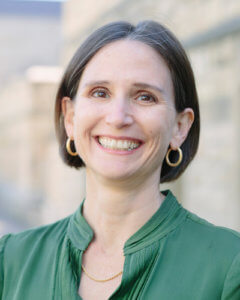What I think we are seeing both with the Australia wildfires in 2019/20 and the Camp Fire in the United States in 2018 — and with so many fires in so many countries where our normal responses are failing us — are social tipping points that are shifting our collective imagination of what we are dealing with.”

by Toddi Steelman
President, International Association of Wildland Fire
While the Australian wildfires seem like a distant past given the crisis created by COVID-19, these fires remain unprecedented in many ways and also deserving of our continued attention given what they signal about how the world around us is changing. Let me take you back in time and remind you what it looked like then. Images of residents fleeing to waterfronts, tourist evacuations by boat, entire habitats incinerated, smoke blanketing Sydney, blood red skies—the human and ecological toll will not be clear for months, if not years. Is this what our future holds?
Tipping points — the idea that once a threshold is crossed you enter into a new state of being is common in the larger discussion about climate change. Typically, these tipping points focus on ecological or earth systems shifts such as ice sheet collapse, thawing permafrost, coral bleaching, destabilization of Atlantic circulation or transitions from rainforest to savannah in the Amazon. Many of these shifts are accompanied by feedbacks that further accelerate climate change—ice sheet collapse can amplify regional warming; influxes of freshwater further shift Atlantic currents that cause monsoons and drought in the Sahel; thawing permafrost releases more carbon dioxide and methane into the atmosphere accelerating change.
We often don’t think about social tipping points. What I think we are seeing both with the Australia wildfires in 2019/20 and the Camp Fire in the United States in 2018 — and with so many fires in so many countries where our normal responses are failing us — are social tipping points that are shifting our collective imagination of what we are dealing with. Slowly, we are waking up to the rising complexity and reality that the planet may be changing and we need to adapt with it. Are we prepared and looking far enough into the future to deal with what we have and what is coming?
If Australia is facing fire seasons like the one just experienced, we will need to see great social change. One idea advanced by David Bowman at the University of Tasmania is to shift the timing of summer school holidays so everyone is not on vacation during fire season. Entire ecosystems in Australia may not recover and evolve into something completely different — how will people and the landscapes with which they have co-existed adapt? Should we declare some areas unsuitable/unfit for human habitation? Should household firefighting equipment and a bunker be mandatory in some areas? Should we pre-evacuate vulnerable communities on severe weather days? Should we dramatically escalate the amount of area that we hazard reduction burn, and ignore complaints of smoke and damage to crops?
Importantly, do we have reason to be more hopeful now about change than after the Black Saturday fires in 2009. When 174 people perished in those fires there were similar discussions. But a decade of follow up research from later fires showed that people were no better prepared, despite seeing how bad things could really get. It’s too soon to make conclusions about this year’s fires but the question is timely: Will this year be a social tipping point or a lost opportunity?
Humans are not good at imagining, conceptualizing, describing, and planning for the very worst possible scenarios. Paradise, California, the site of the Camp Fire, had a nearly 20-year history of very actively preparing for and expecting wildfire — the public participated in and contributed to the development of the evacuation plan, and ensured that neighbors received and understood it. But the unimaginable erased all previous risk reduction efforts. Ember storms ignited the entire town simultaneously. 40,000 people had to evacuate — not in the meticulously planned phases, but all at once. We all know the results. This situation was never imagined or recognized.
The Camp Fire and other fires during 2017 and 2018 caused Pacific Gas and Electric, a major California utility, to declare bankruptcy. The cascading social consequences from these fires include higher utility rates, losses for shareholders, higher insurance rates or inability to insure, municipal bankruptcies and mental and other health tolls on the communities that have had to suffer through the trauma.
These tipping points stress our social, economic, and spiritual fabric. Can we recognize that we are tipping and if so are we prepared to imagine the world on the other side so we can better prepare, respond and adapt to it? IAWF seeks to pursue these important questions in collaboration with our members and partner organizations at our proposed Climate and Fire conference in 2021. I hope that you will consider participating and attending to help us imagine together.
Background
“Recent research indicates that groups as small as 25 percent can tip the “the opinion of the majority … to that of the minority.”
Centola, D., Becker, J., Brackbill, D., & Baronchelli, A. (2018). Experimental evidence for tipping points in social convention. Science, 360(6393), 1116. https://doi.org/10.1126/science.aas8827.
+
“The Tipping Point” by Malcolm Gladwell popularized the concept of tipping points in 2008; the book blurb is even more timely today, though the real impacts, framed with wildfire and flu, may not be as magical as foretold: “The tipping point is that magic moment when an idea, trend, or social behavior crosses a threshold, tips, and spreads like wildfire. Just as a single sick person can start an epidemic of the flu, so too can a small but precisely targeted push cause a fashion trend, the popularity of a new product, or a drop in the crime rate.” https://www.littlebrown.com/titles/malcolm-gladwell/the-tipping-point/9780759574731/
